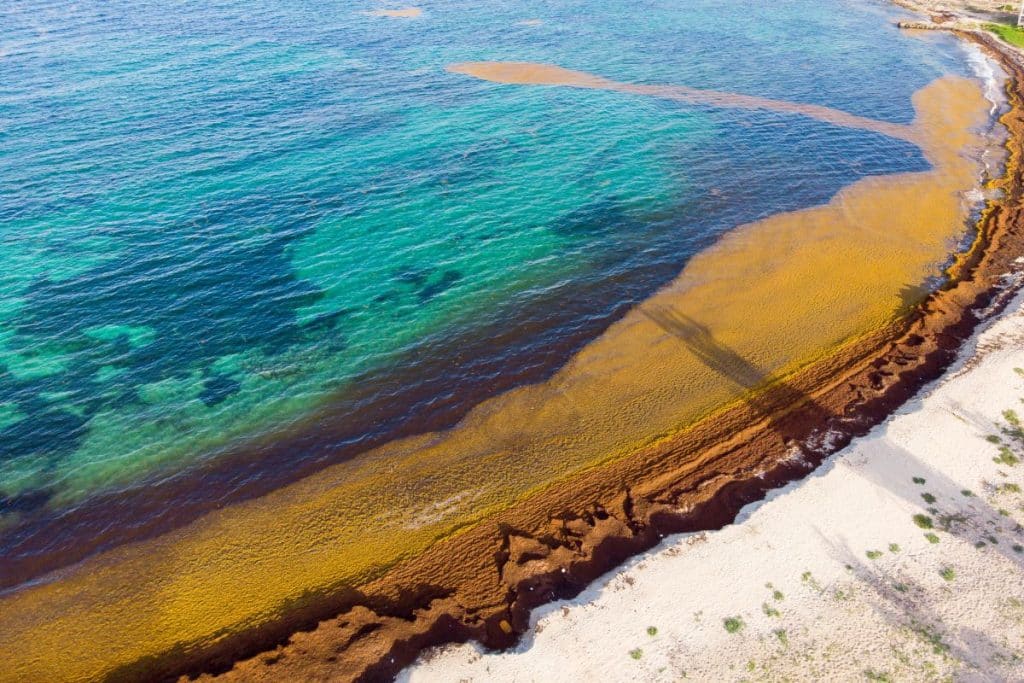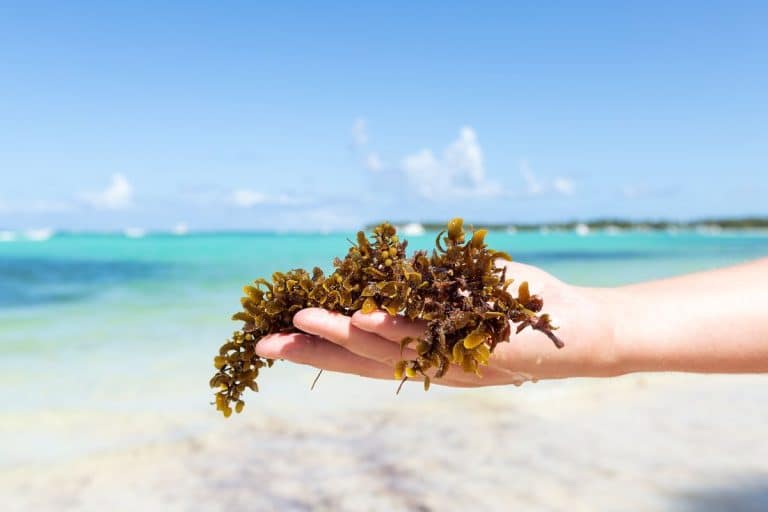Sargassum seaweed has started invading Florida’s beaches and the predicted impact is worse than in previous years.
The authorities have been cleaning the beaches ever since they were alerted to the situation but the peak of seaweed season is just about to come.
Is the sargassum seaweed dangerous?
Sargassum resembles a brown, leafy seaweed most of the time. It often floats on the surface of the ocean. It originated in the Sargasso Sea, a large region of the Atlantic Ocean.
The Sargassum Information Hub claims the algae “provides food and shelter for fish, mammals, seabirds, crabs and more.”
In typical circumstances, it can promote health of the ecosystem. Dolphins and turtles, on the other hand, can suffocate if they are unable to break through the water’s surface when it becomes too thick. Without sunlight, plants on the ocean floor can also perish.
Humans are also at risk from sargassum. It gives off rotten-egg-smelling ammonia and hydrogen sulfide gas. Inhaling this gas can cause problems with the skin, brain, and lungs. It can also cause signs such as nausea, difficulty breathing, and skin irritation. High exposure to sargassum can sometimes even be fatal.
In Guadeloupe and Martinique, there were 11,000 probable cases of sargassum poisoning in 2018. Patients reported having headaches, skin rashes, vertigo, and shortness of breath.
Sargassum gas exposure is not treatable in any way. Symptoms are often minor and improve with time. It is recommended to seek medical attention if symptoms get worse. It is advisable to stay away from seaweed altogether. Walking on the beach is discouraged, especially if the air smells like rotten eggs.
The tourism sector has also been affected by the sargassum bloom in Florida. According to Dr. Gustavo Jorge Gonie, an oceanographer with the National Oceanic and Atmospheric Administration, travelers are strongly advised to check for the presence of sargassum on their chosen beach before visiting. He also shared:
“We’re trying to work on these early warning systems — high resolution in coastal areas, which takes higher-resolution satellite imagery to do a better job showing what’s actually coming into a beach within the next 24 or 48 hours.”
What are the alternative uses of Sargassum seaweed?

Sargassum has various alternative uses beyond its traditional use as a fertilizer. Some of these alternative uses include:
- Animal feed: Sargassum seaweed can be used as a feed supplement for livestock and poultry due to its high nutritional content.
- Bioplastics: Sargassum seaweed can be used to produce biodegradable plastics as an alternative to traditional petroleum-based plastics.
- Biofuels: Sargassum seaweed can be used to produce biofuels such as ethanol and butanol.
- Cosmetics: Sargassum seaweed is used in some cosmetic products, such as facial masks, due to its skin-nourishing properties.
- Pharmaceuticals: Sargassum seaweed contains compounds that have potential medicinal properties and can be used to produce drugs for various illnesses.
- Soil erosion control: Sargassum seaweed can be used to prevent soil erosion in coastal areas.
- Water purification: Sargassum seaweed can be used to remove heavy metals and other pollutants from water.

